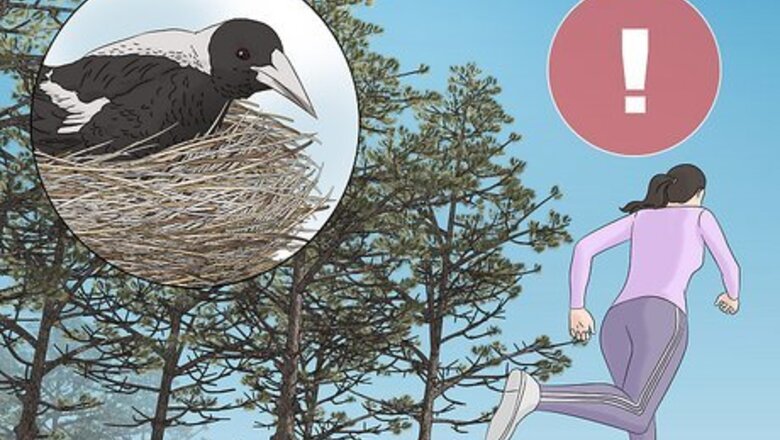
views
Checking for Nests and Groups

Pay attention to nesting areas of magpies. If you see magpie nesting activity occurring in an area where you walk or cycle, make note of it for future reference. That way, you can warn others and make plans to avoid the area.
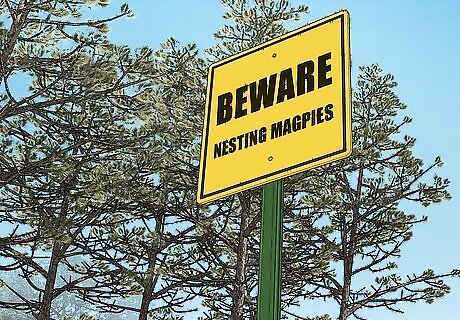
Tell the local council you have magpies nesting in your area. This will permit the council to leave warning notices out that will alert everyone in the area to take care. You could also make your own sign while waiting for the government to put one up. If you don't know the number for your local council, you can look yours up here: https://www.lgnz.co.nz/local-government-in-nz/new-zealands-councils/
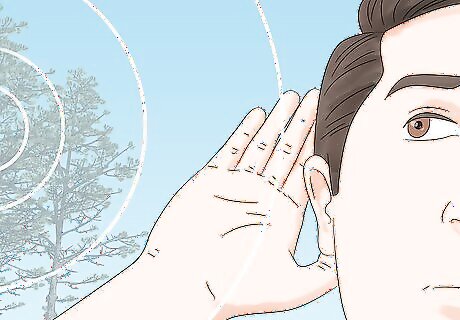
Listen for groups of magpies together. When these birds get together, you'll hear shrill cries. When a magpie is by itself, it's generally pretty calm and its song is gentle. However, together, they egg each other on, and their cries get louder and louder. Groups of magpies tend to be more territorial, so if you see a nesting site with a flock of birds, that area will likely be more dangerous than a single nesting magpie.

Watch for groups of magpies. You should also be on the lookout for these birds. They tend to form flocks of 2-10 birds, so you should be able to spot them if they are in one of these groups. These birds are mostly black with some white on their wings and heads. Look for online magpie databases for your area and update the database where you notice nesting locations.

Find a new route to where you're going. If you spot a nesting site or a swooping bird, it's easiest just to go a different way instead of the route you've chosen. You don't have to necessarily change your route drastically; even walking on the opposite side of the road away from the magpies may be enough. A magpie will only defend its nest so far. If you're walking, it's likely only to go 110 metres (360 ft), though it may go as far as 150 metres (490 ft) if you're on a bike.
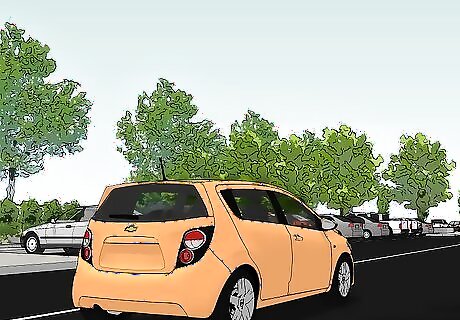
Plan a new route for the nesting season. The nesting season runs from June to December. If a nesting site is along your daily walking path, it may be best just to find a new way to go for this time period. Alternatively, take public transport or travel by car during this time period if you can.
Getting Away from Swooping Magpies
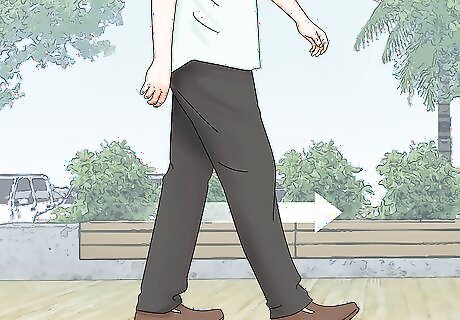
Walk away from the area as quick as you can. If you missed the warning signs of a magpie and find yourself being swooped by one, walk out of there as calmly and as quickly as you can. Don't try to run, yell, or flap your arms about, as the bird may see this as an attack.Stand up and walk tall, a confident stance can discourage some birds from attacking. Children will often react in a panicked way, running away and screaming; they do it without thinking so train them early to keep calm. The first swoop is generally a warning swoop, and a magpie can be severely injured or die from making contact via swooping. Often, it will try to avoid actual contact.

Make eye contact with the magpie. Magpies usually swoop from behind, so they are much less likely to swoop if they are being watched directly. As you walk away, try to maintain eye contact by looking over your shoulder as often as you can. You can also try walking backward, but make sure to turn around periodically so you don't fall and injure yourself. Stare down the magpie as best you can!

Get off your bike if you're swooped. Sometimes, just dismounting is enough to calm the magpie. Bicycles seem to irritate magpies the most. If you stay on your bike, the bird's swoops could cause you to have an accident. Off your bike, your helmet will protect you and you will not be distracted by a bird swooping in your face while riding. Walk the bike quickly out of the vicinity of the magpie.
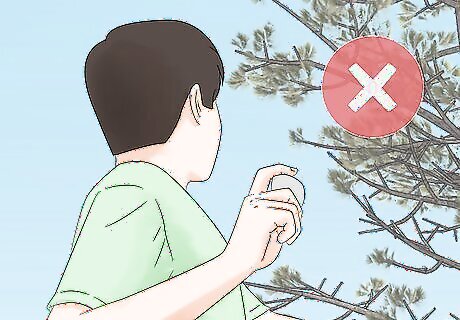
Do not ever harass magpies. A magpie who has experienced harassment will cease to trust humans. Don't yell at the magpie, as it may see that as an attack. Do not throw rocks or climb a tree to destroy a nest. Remember that magpies are fiercely family protective and will react if they feel the chicks are threatened. In general terms, the killing of native birds and animals is illegal in Australia unless you hold a licence or have the relevant authorisation to do so. If you live outside of Australia, for example in New Zealand, check with the relevant local authorities if your Australian Magpie issue warrants exterminating them.
Using Protective Measures
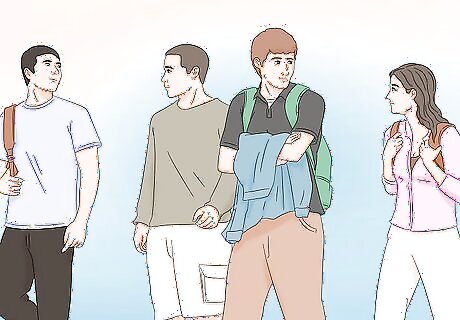
Walk in groups to discourage attacks. Magpies are more likely to attack a single person walking by themselves. If you're in a group, the magpie may feel outnumbered and is less likely to swoop down.

Wear eyes in the back of your head. No, this is not a joke! Because you can stare down a magpie and it won't attack, fake eyes can have a similar effect. To this end, add fake eyes to your headgear to make the magpie think you are watching it from either side of your head. You can even use googly eyes from the craft store or just ones cut out from a magazine. Attach them to the back of the hood of a hoodie with double-sided tape. Another trick is to wear your sunglasses on the back of your hat or head.
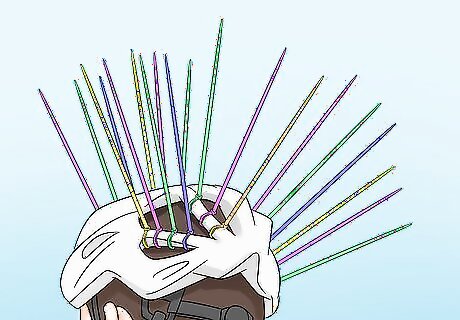
Put zip ties on your helmet. If you are riding a bike, attach zip ties to the helmet in a random pattern. Choose bright colors. Leave the strips long, and the bright display may be enough to distract the magpie. You can use this tactic on its own or in combination with fake eyes. Try pipe cleaners in place of zip ties if that's what you have on hand.
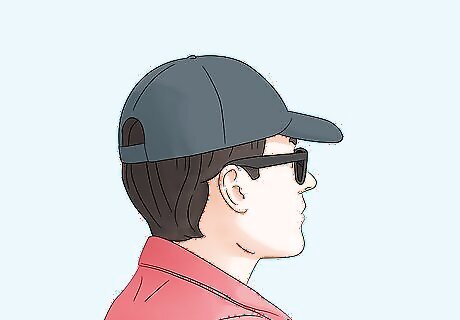
Put on a solid hat and sunglasses to protect your head. These garments will protect your scalp and eyes if a magpie decides to get too close. Make sure the hat is solid enough to protect against claws and a beak.
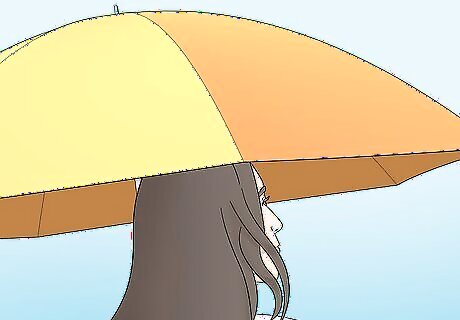
Use an umbrella in nesting areas. If you have an umbrella, open it up and walk with it through the nesting area. It will protect you from the magpie. As an added bonus, it will keep off the sun too! If the magpie does attack, it will likely go for the highest point: your umbrella.

Cover your head with your arms if needed. If you find yourself being swooped by a bird, covering your head this way may be your best bet if you have nothing else. Opt for a bag or other protective surface first, but if you have nothing else, protect your eyes and head with your arms. You can also improvise other solutions, such as a newspaper. Anything you can use to cover your head will help. Be extremely cautious if you're carrying a baby or infant. Panicking about a magpie attack and dropping the baby, potentially outdoors on a hard surface, could result in tragedy.




















Comments
0 comment